
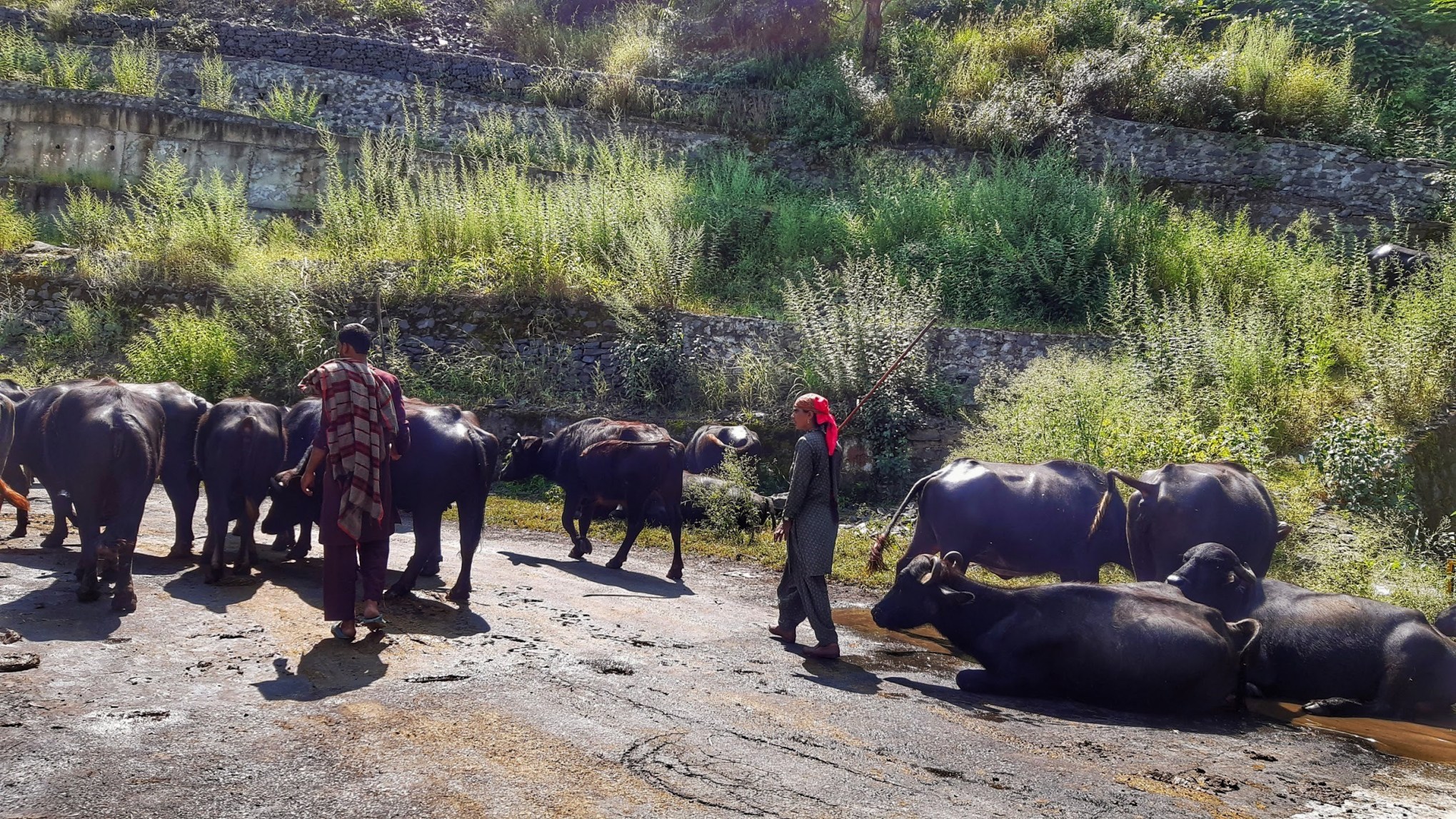
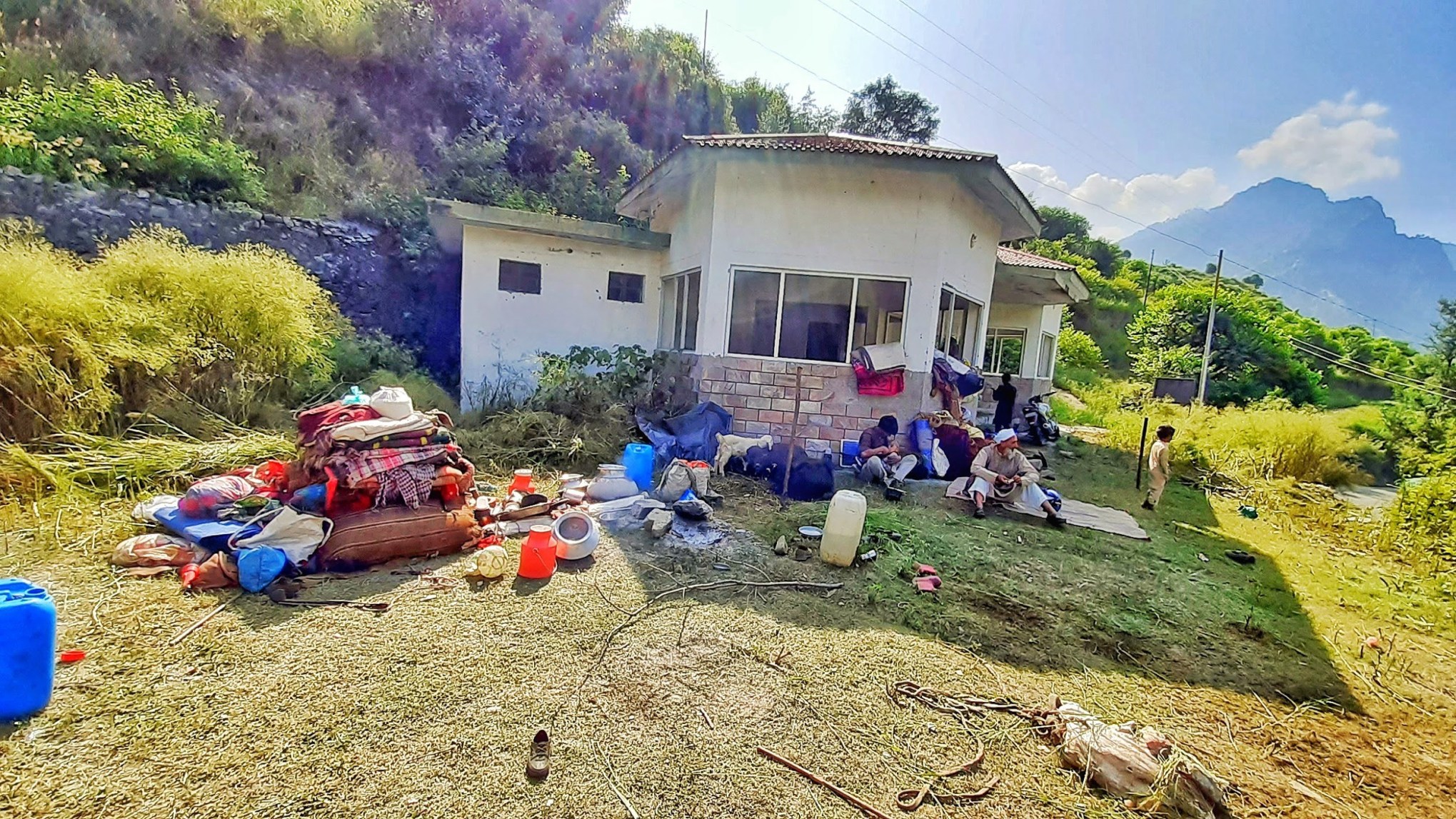 Van Gujjar camp by the road. Each member of the tribe treks to the mountains during summer, and make the same journey down before the snowfalls.
Van Gujjar camp by the road. Each member of the tribe treks to the mountains during summer, and make the same journey down before the snowfalls.
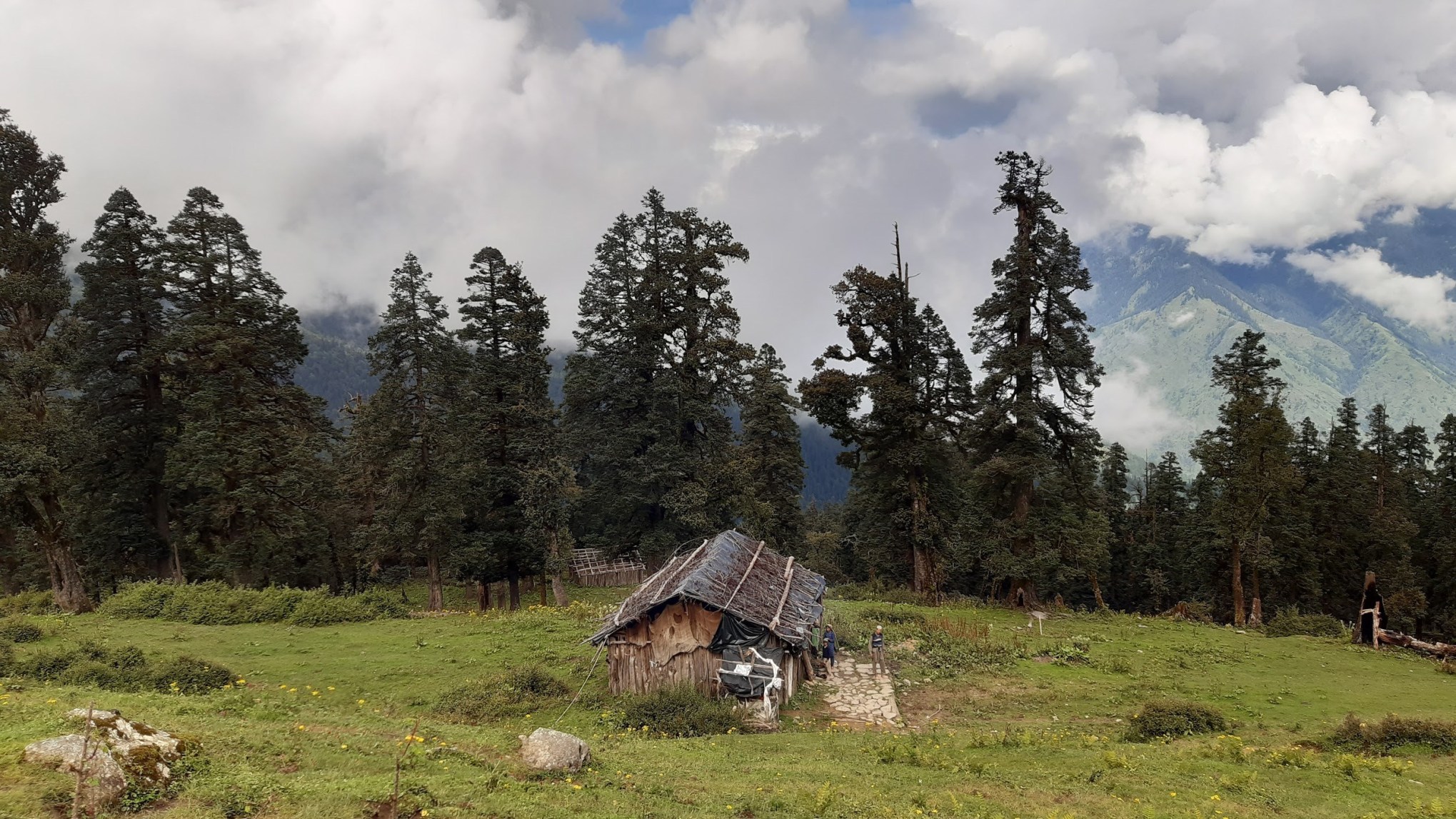 Van Gujjars reside in temporary settlements known as Dera. Dera is their home which is a small wooden structure with a roof that serves as a shelter for them. Each Dera belongs to a particular family.
Van Gujjars reside in temporary settlements known as Dera. Dera is their home which is a small wooden structure with a roof that serves as a shelter for them. Each Dera belongs to a particular family.
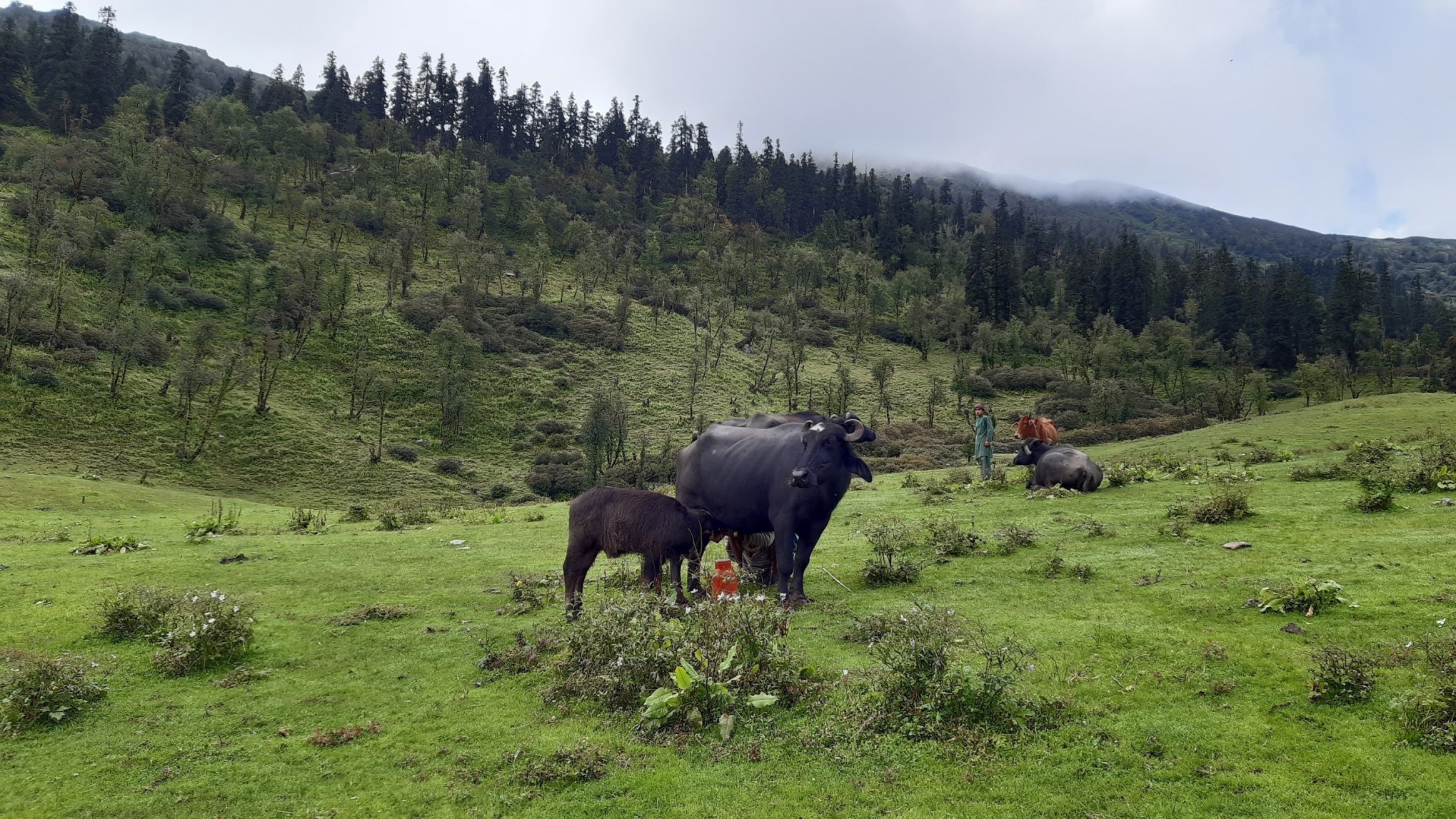 Fareed, milking the cattle. Within the community the roles are fluid as both men and women lend each other a hand in most jobs. Both men and women collect fire for wood and grass for the younger cattle. Whilst women primarily prepare milk and paneer for consumption, the men primarily go out and sell said products.
Fareed, milking the cattle. Within the community the roles are fluid as both men and women lend each other a hand in most jobs. Both men and women collect fire for wood and grass for the younger cattle. Whilst women primarily prepare milk and paneer for consumption, the men primarily go out and sell said products.
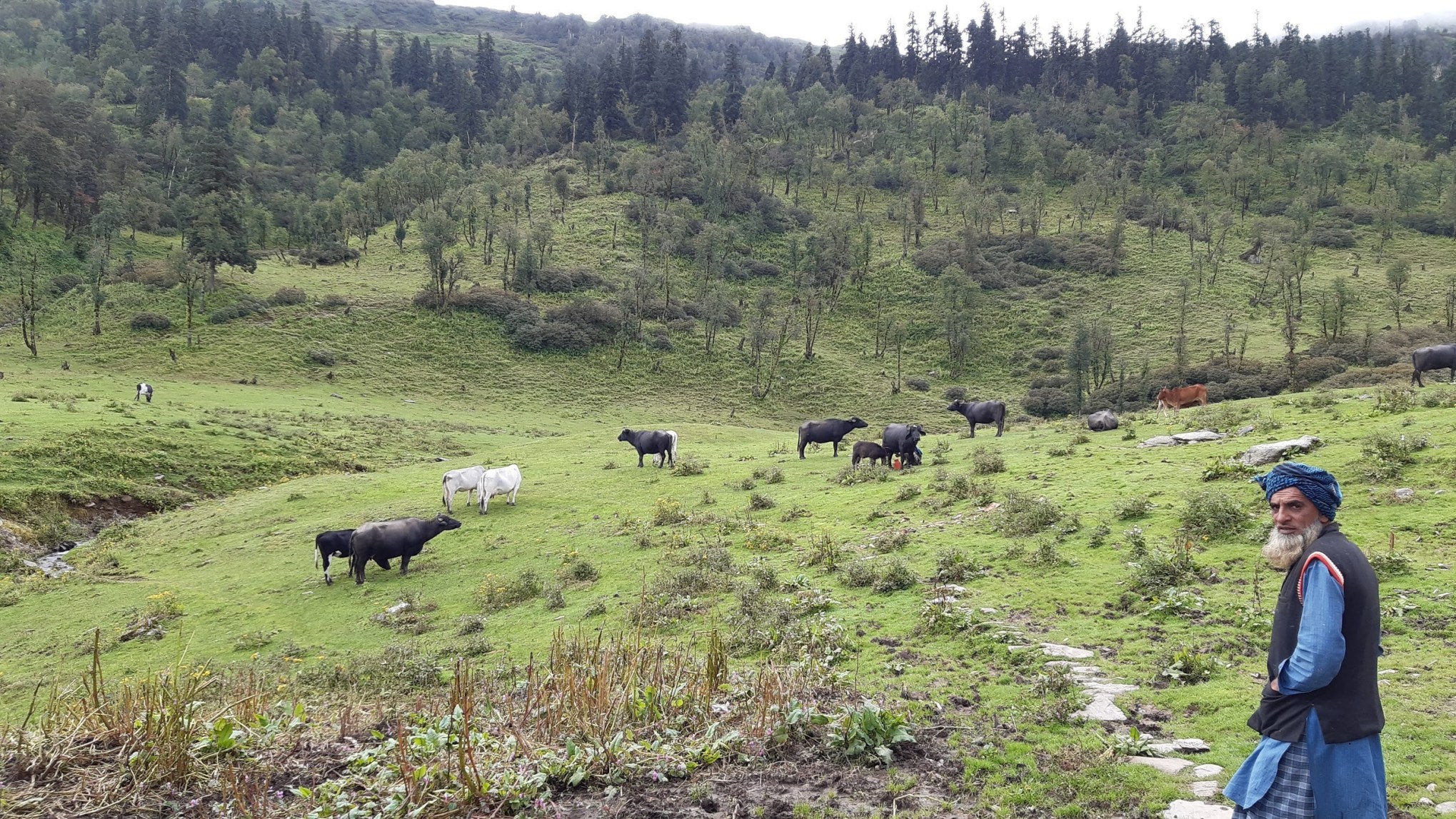 Basheer is seen grazing his cattle. He says, ‘Humein humare jaanwaron se Mohabbat hai’ (We love our animals)
Basheer is seen grazing his cattle. He says, ‘Humein humare jaanwaron se Mohabbat hai’ (We love our animals)
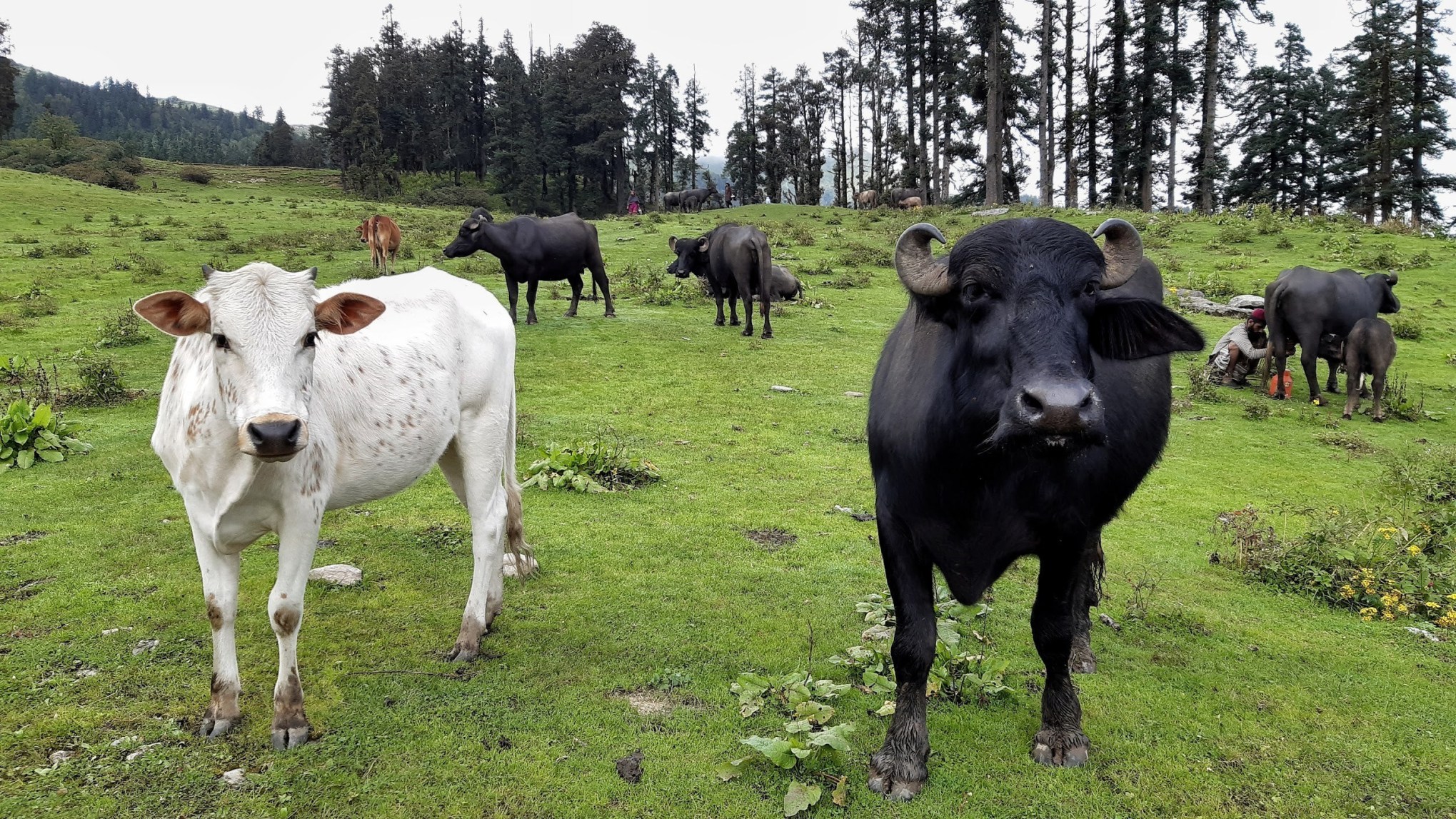 The cattle graze throughout the day. They return home in the morning and evening when they have to be milked.
The cattle graze throughout the day. They return home in the morning and evening when they have to be milked.
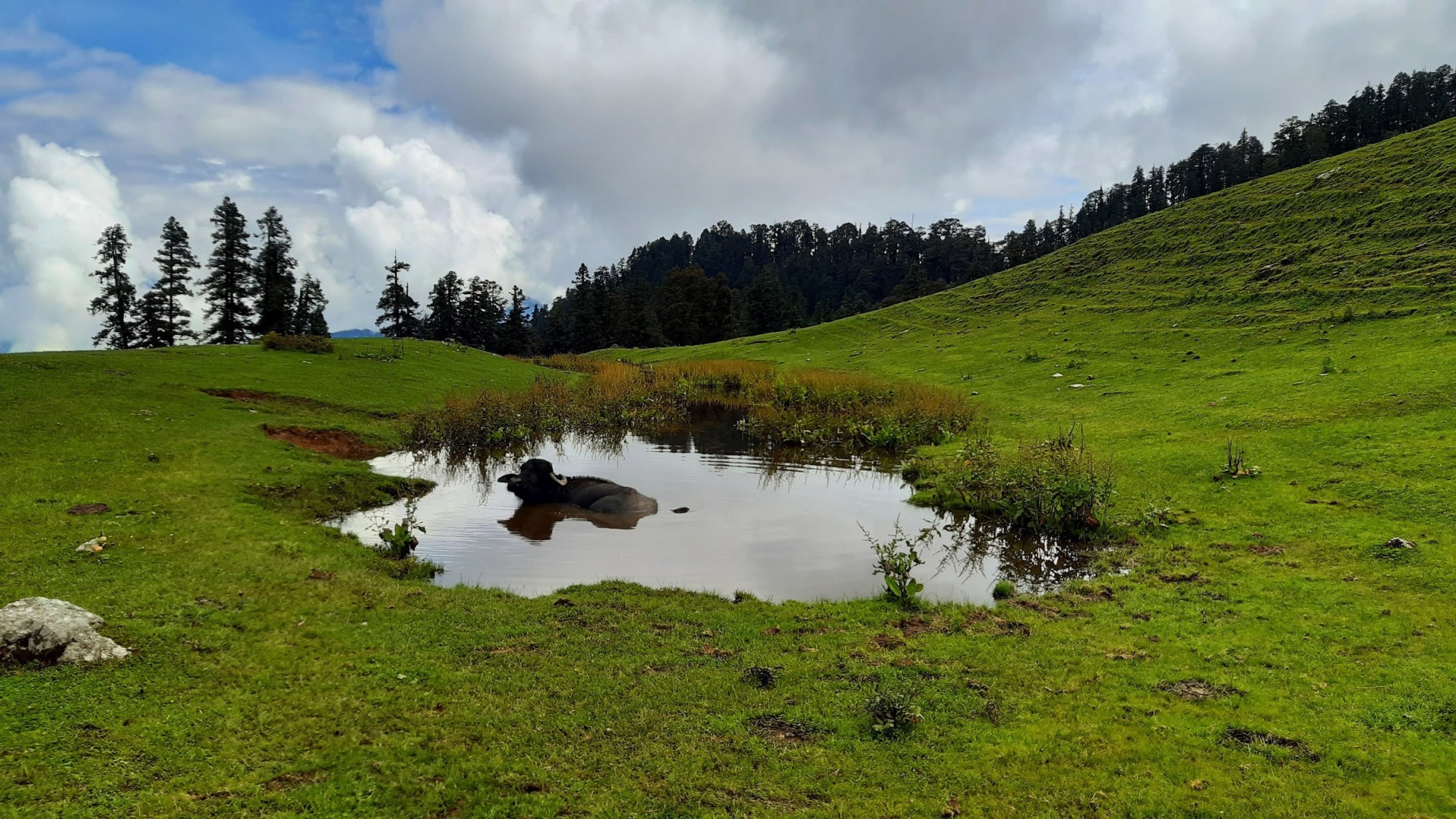 Cattle enjoying the freezing water in the hills.
Cattle enjoying the freezing water in the hills.
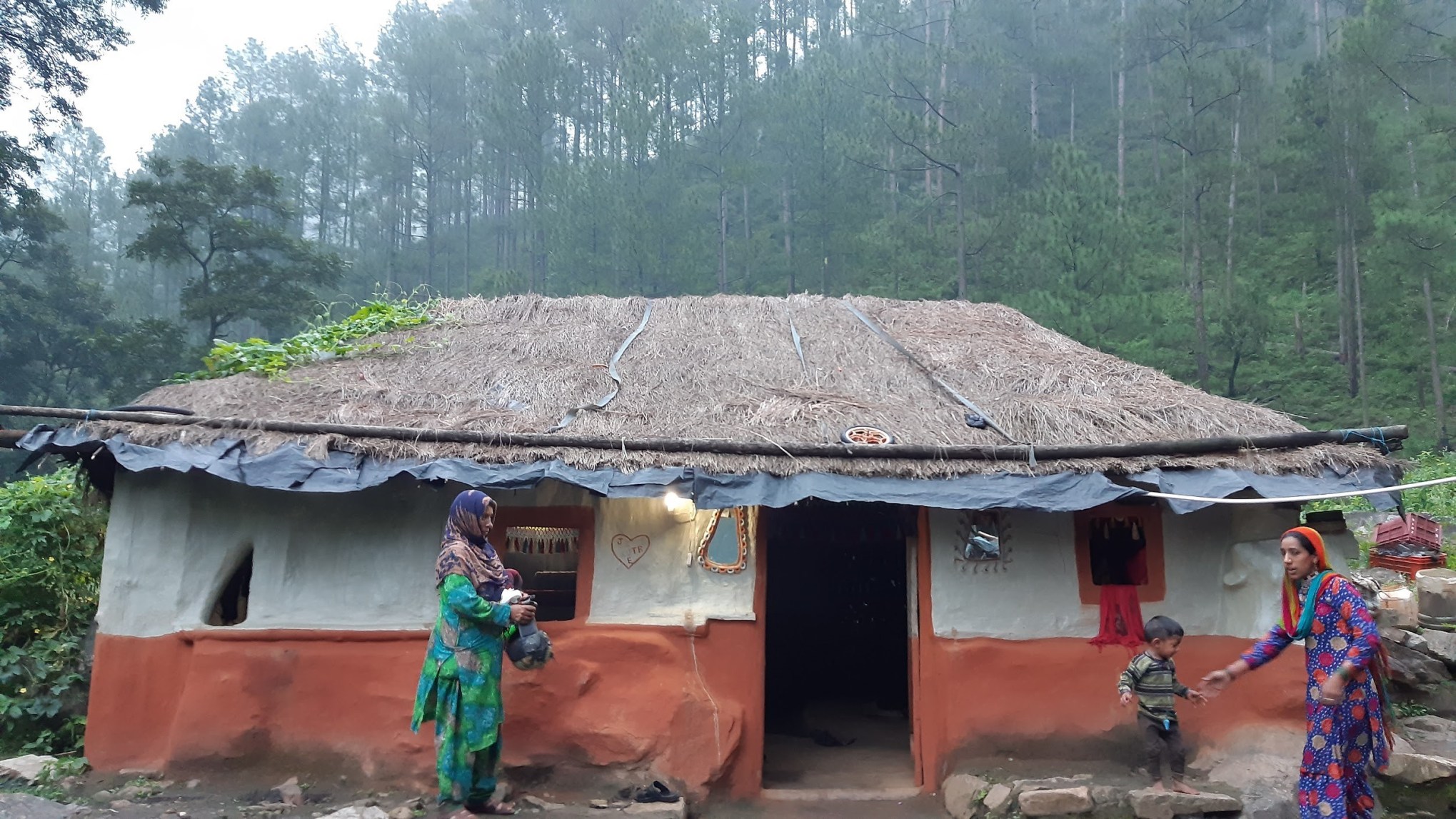 Jalekha with her daughter in law, Zubaida and grand daughter Banu in front of her Dera in Lunagad, Mori.
Jalekha with her daughter in law, Zubaida and grand daughter Banu in front of her Dera in Lunagad, Mori.
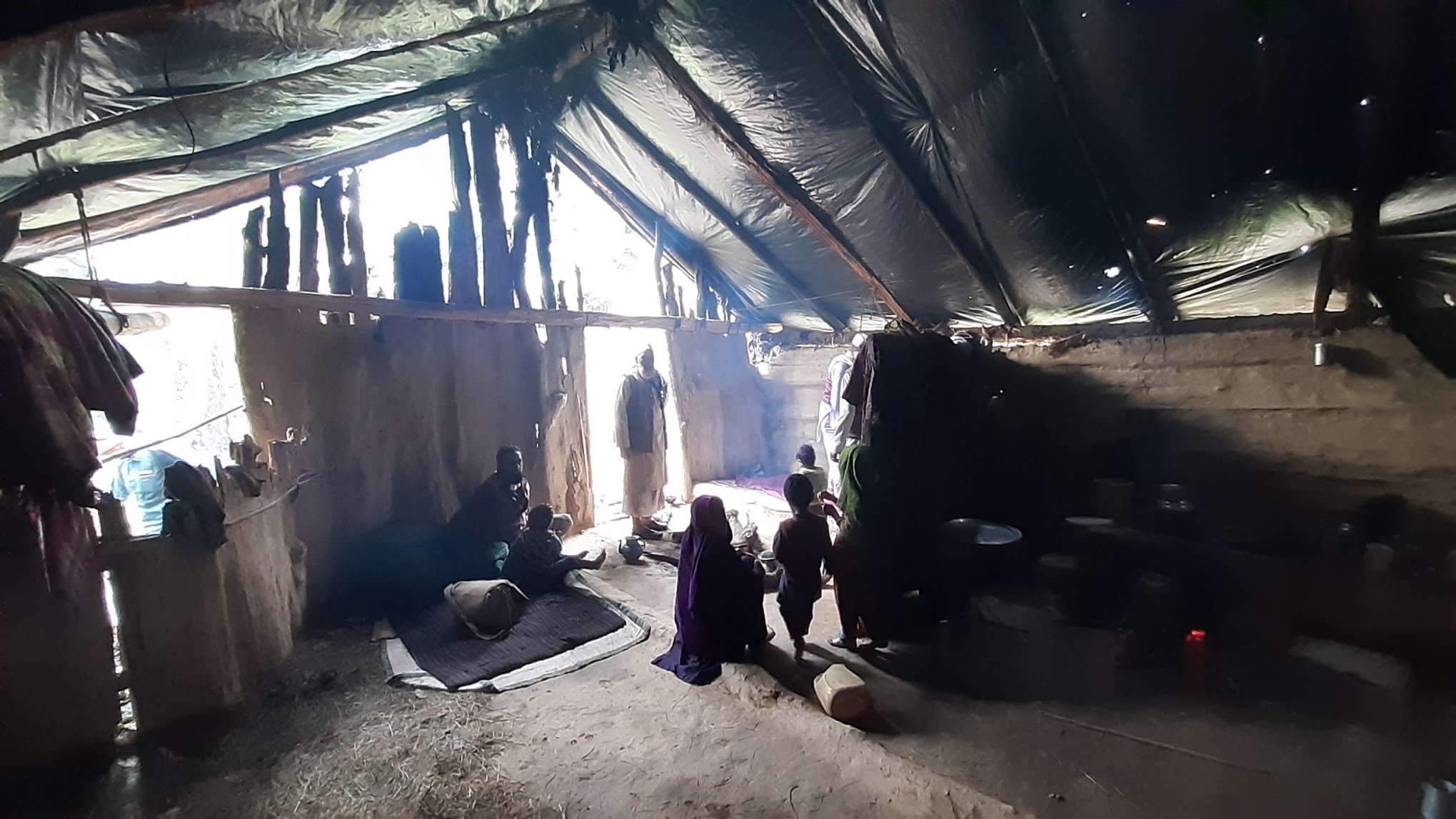 Fareed’s Dera in Phulu.
Fareed’s Dera in Phulu.
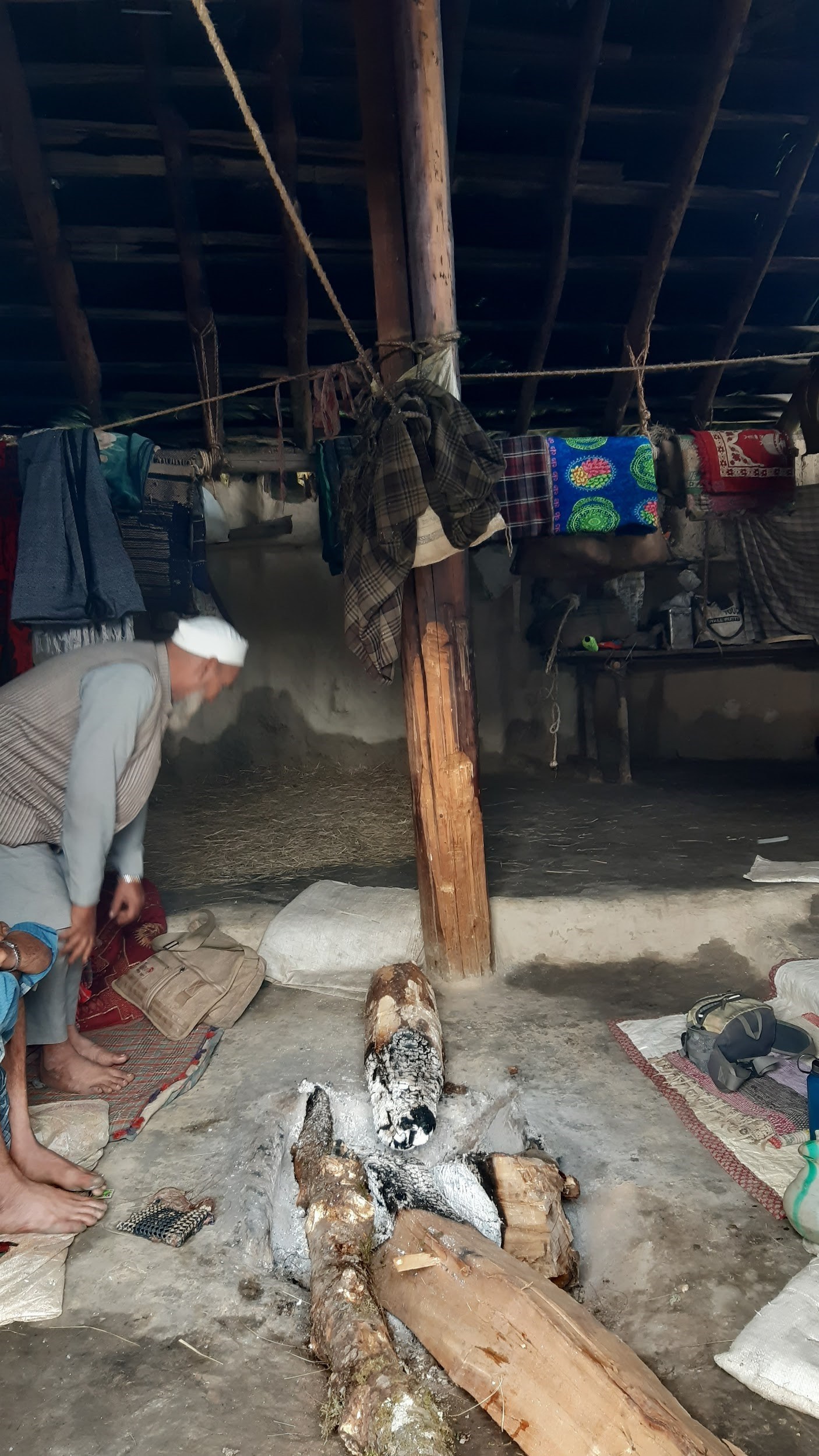 Each Dera has a fireplace at the entrance.
Each Dera has a fireplace at the entrance.
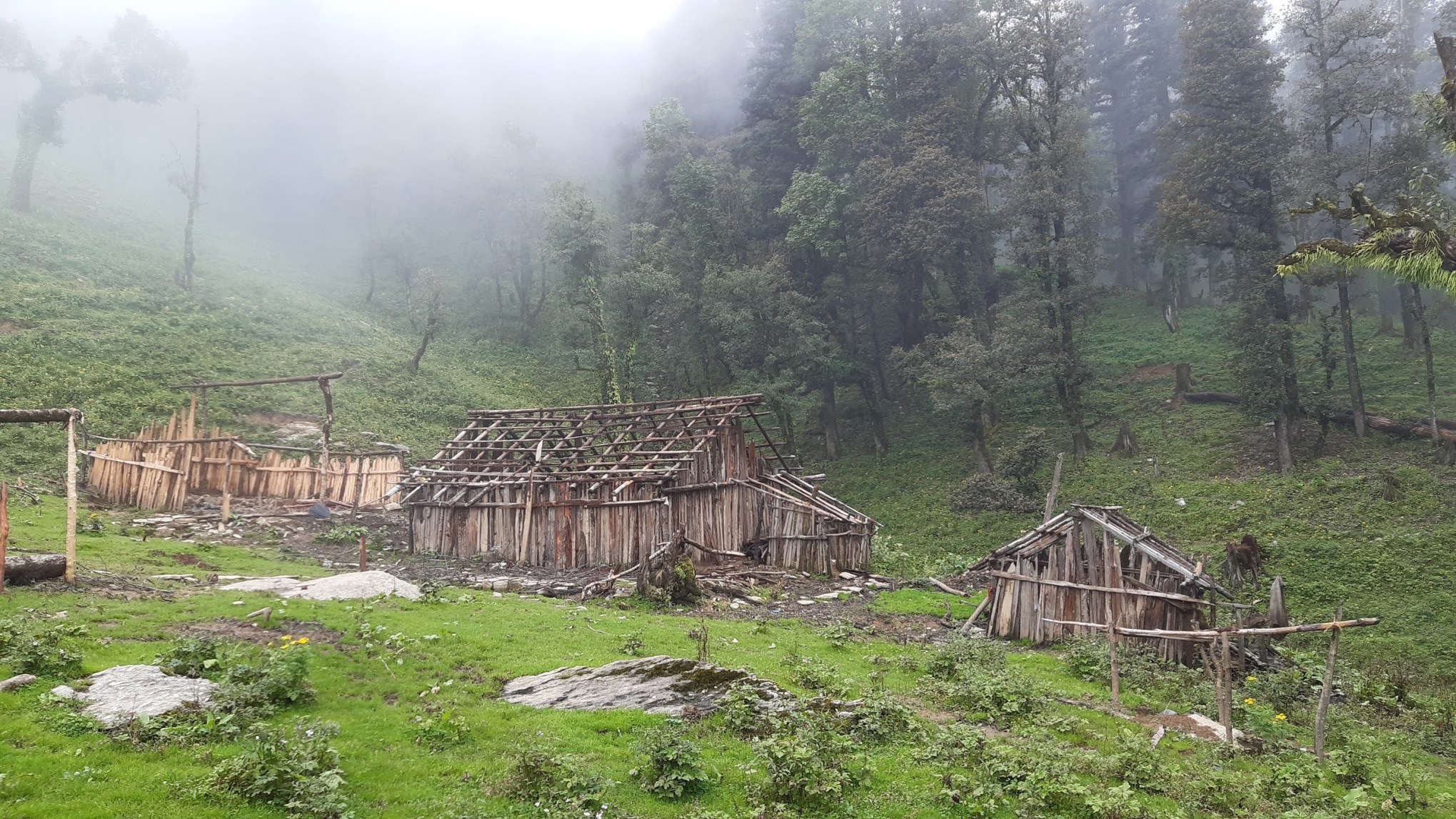 As the winter approaches, Van Gujjars abandon these little Deras and make their way to the lower plains. Before they embark on this journey, the Van Gujjars ensure that every Dera has its roof taken off. This is done to prevent Dera from any damage caused during the heavy snowfall.
As the winter approaches, Van Gujjars abandon these little Deras and make their way to the lower plains. Before they embark on this journey, the Van Gujjars ensure that every Dera has its roof taken off. This is done to prevent Dera from any damage caused during the heavy snowfall.
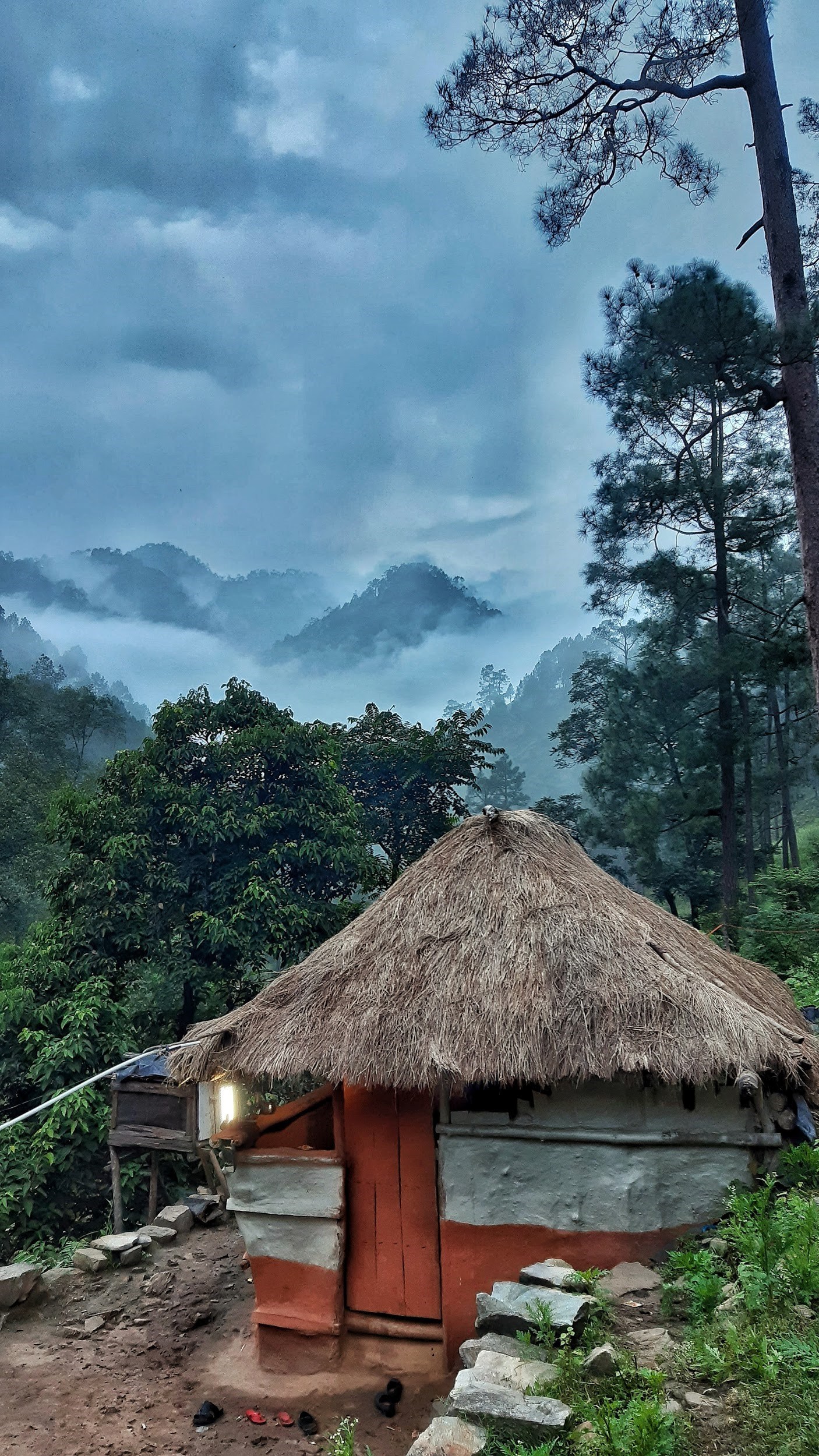 Jalekha’s Dera in Mori.
Jalekha’s Dera in Mori.
 Kammu Bibi’s Dera in Phulu
Kammu Bibi’s Dera in Phulu
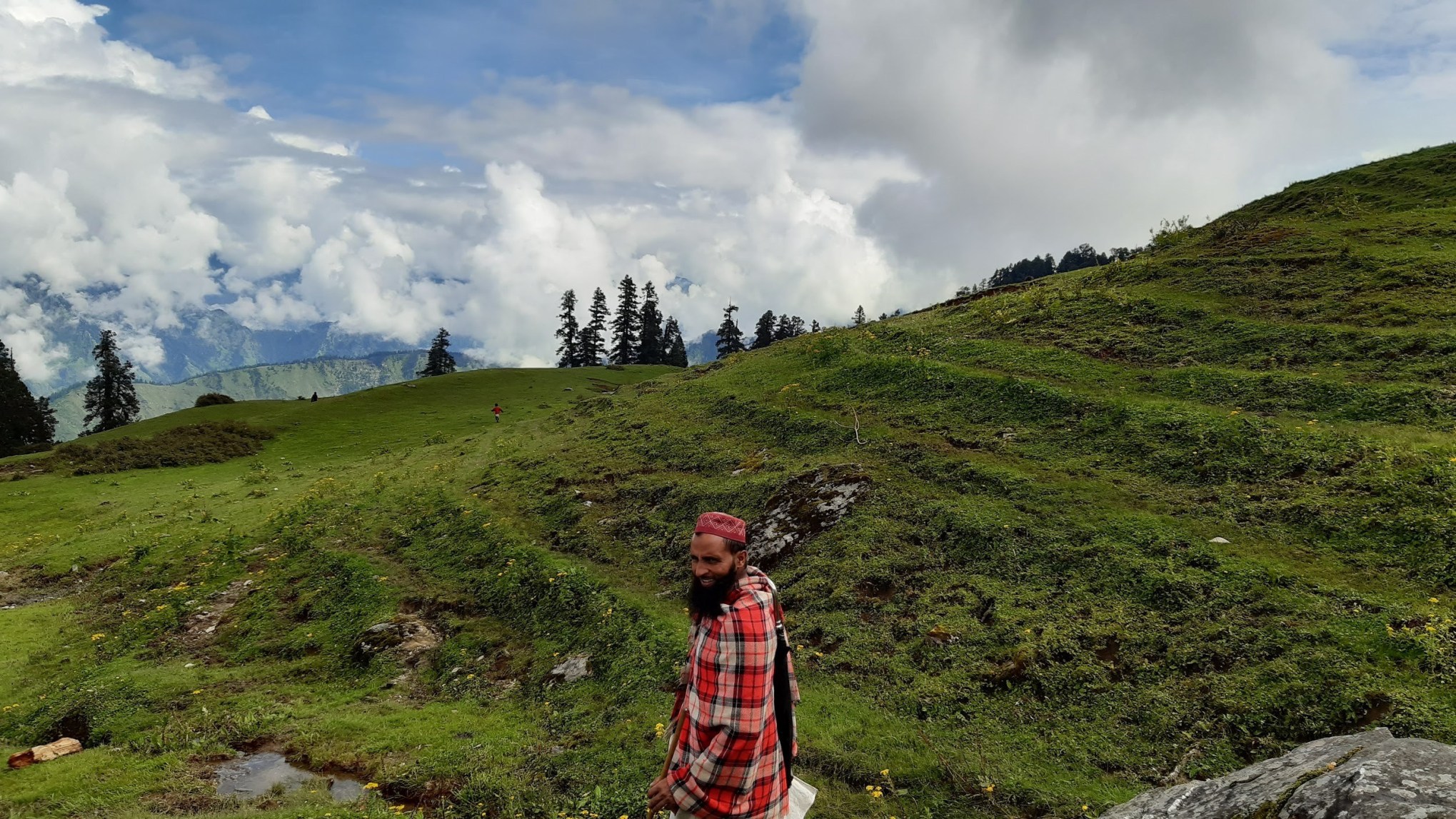
Noor, a Van Gujjar, who has been doing the journey since his childhood, tells about how you can leave your topi (skull cap) in the settlement and you will find it in the exact place the following year. He says there is no fear of any theft, any animals in the forest.
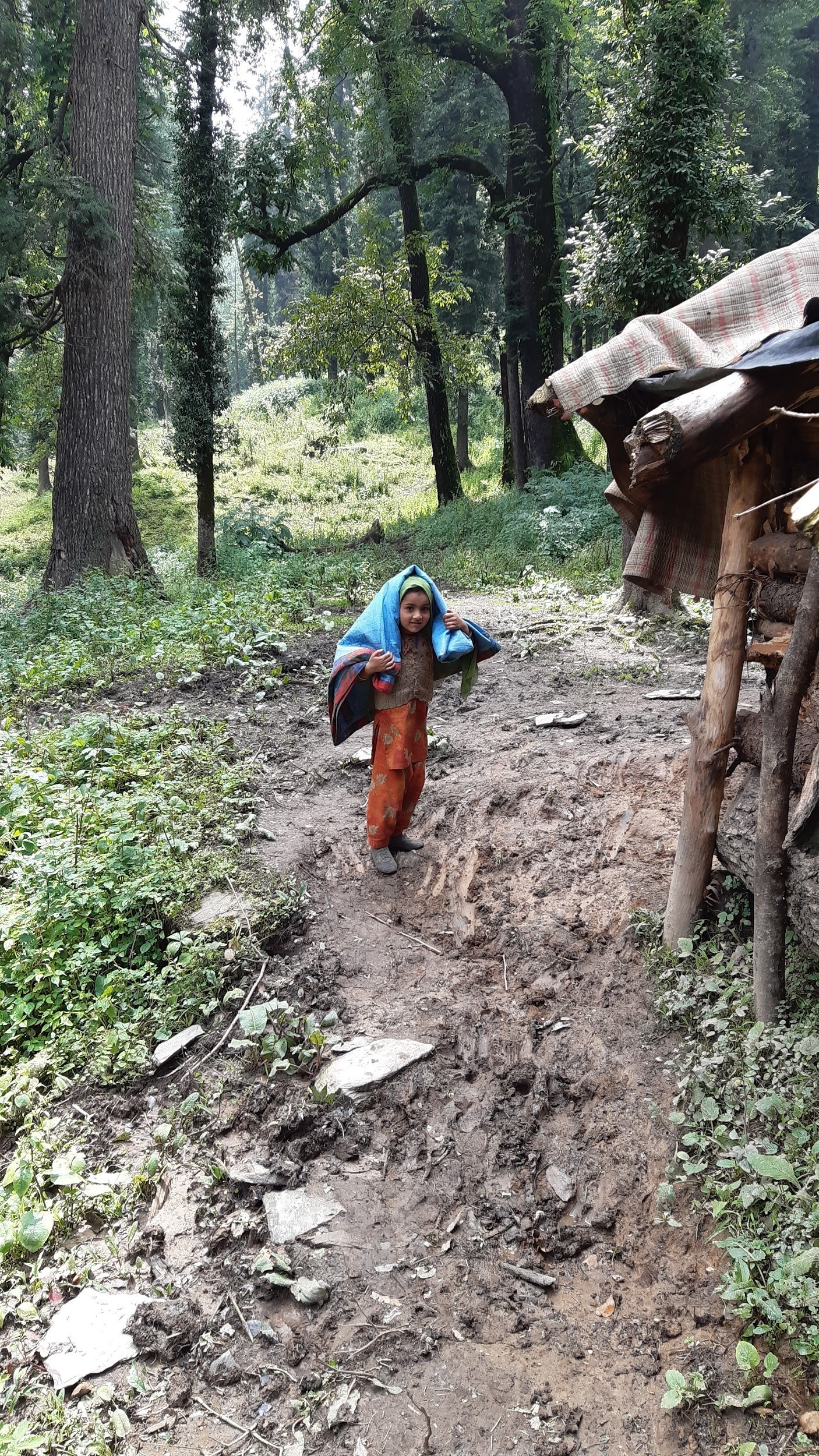 Rehmat, called as Nepo at home, is carrying bedding material to adjacent Dera.
Rehmat, called as Nepo at home, is carrying bedding material to adjacent Dera.
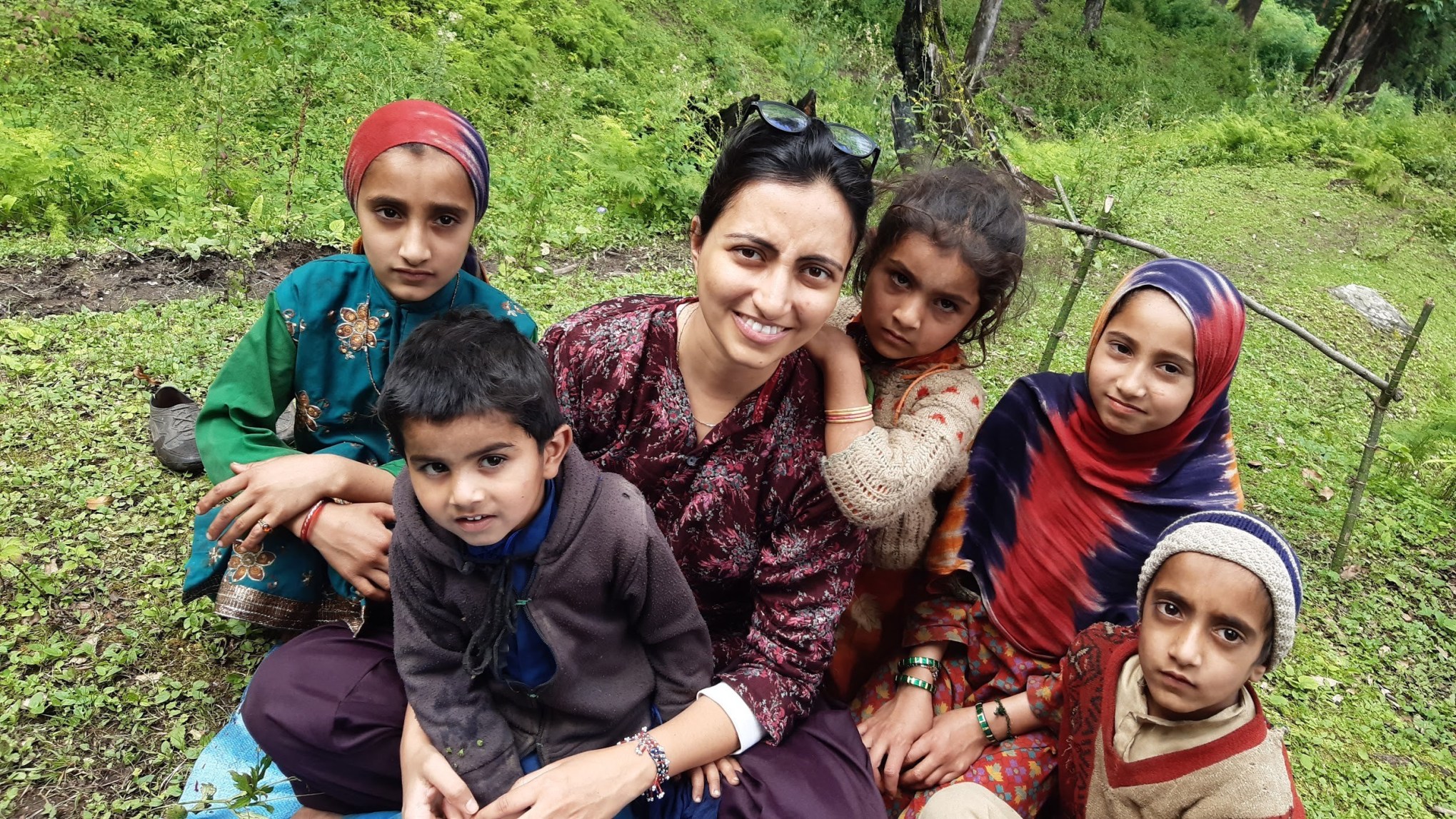
 The women wear printed, long- sleeved salwar kameez. These are usually made of bright colours. Every member of tribe keeps their heads covered. Men with topis and women with dupattas. Even the children don a similar attire.
The women wear printed, long- sleeved salwar kameez. These are usually made of bright colours. Every member of tribe keeps their heads covered. Men with topis and women with dupattas. Even the children don a similar attire.
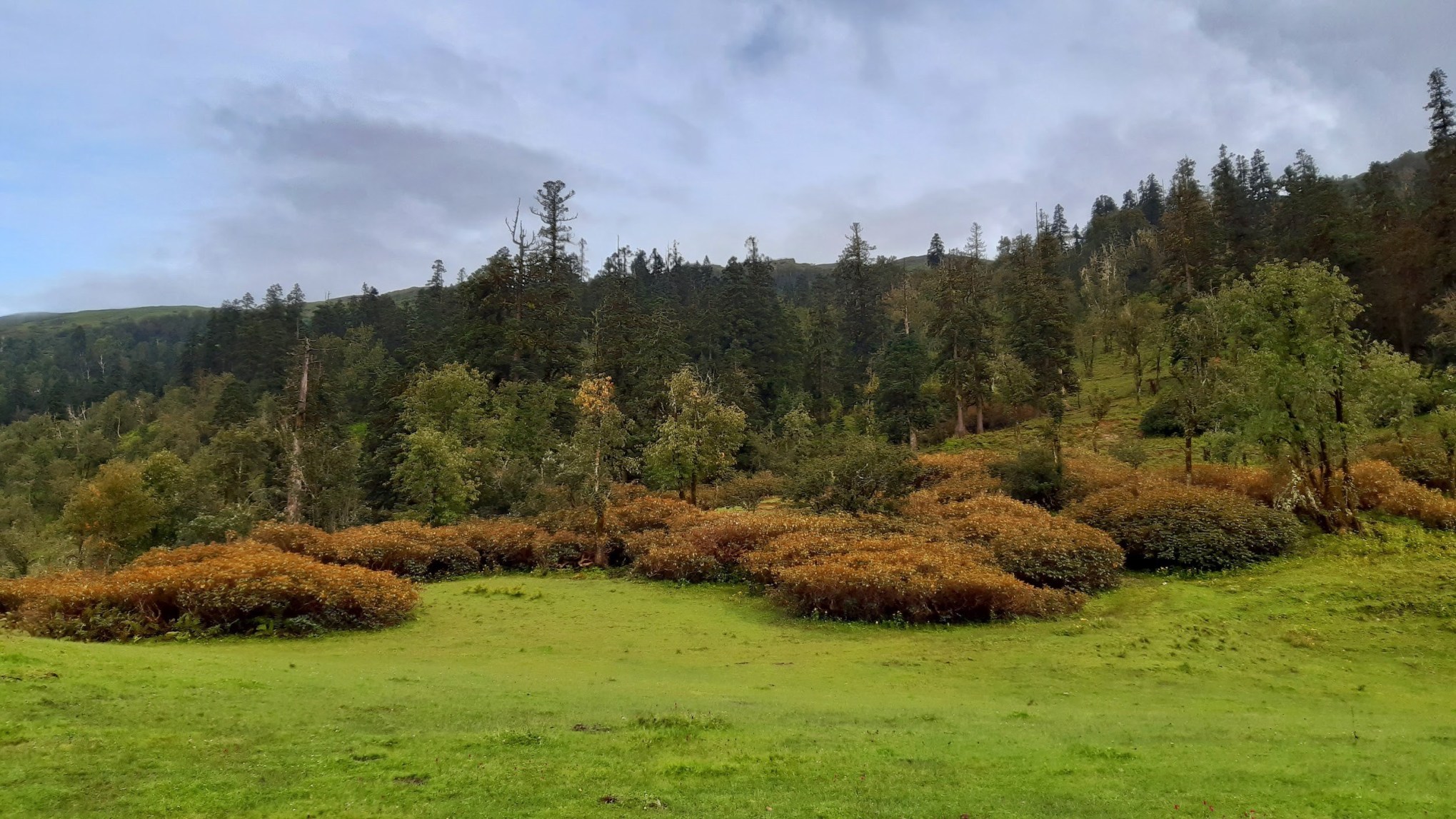 They get permits from the forest dept to graze for a period of 6 months.
They get permits from the forest dept to graze for a period of 6 months.
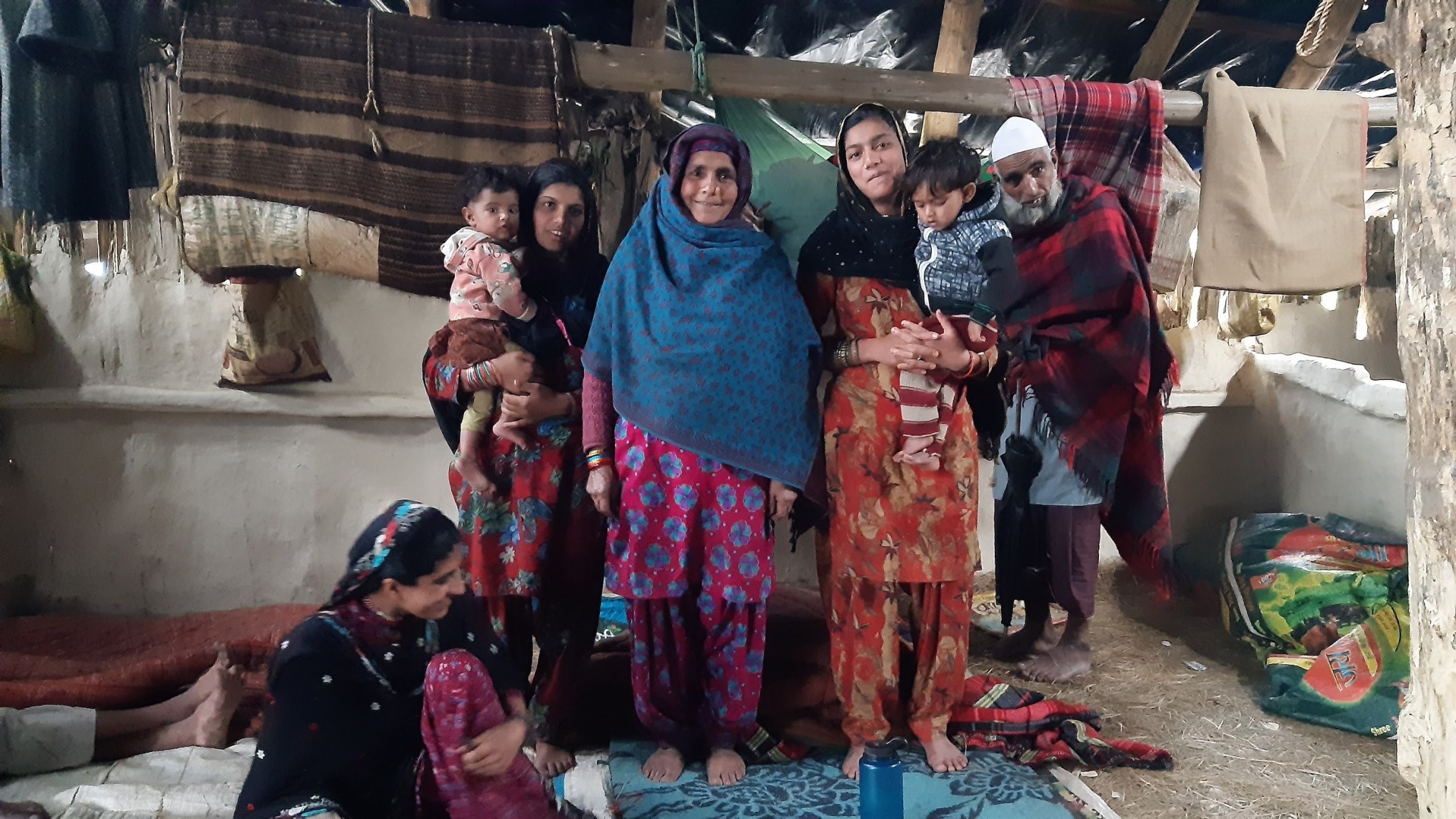 Kammu bibi with her husband and daughters-in-law.
Kammu bibi with her husband and daughters-in-law.
*All images by Zuha Junaid




